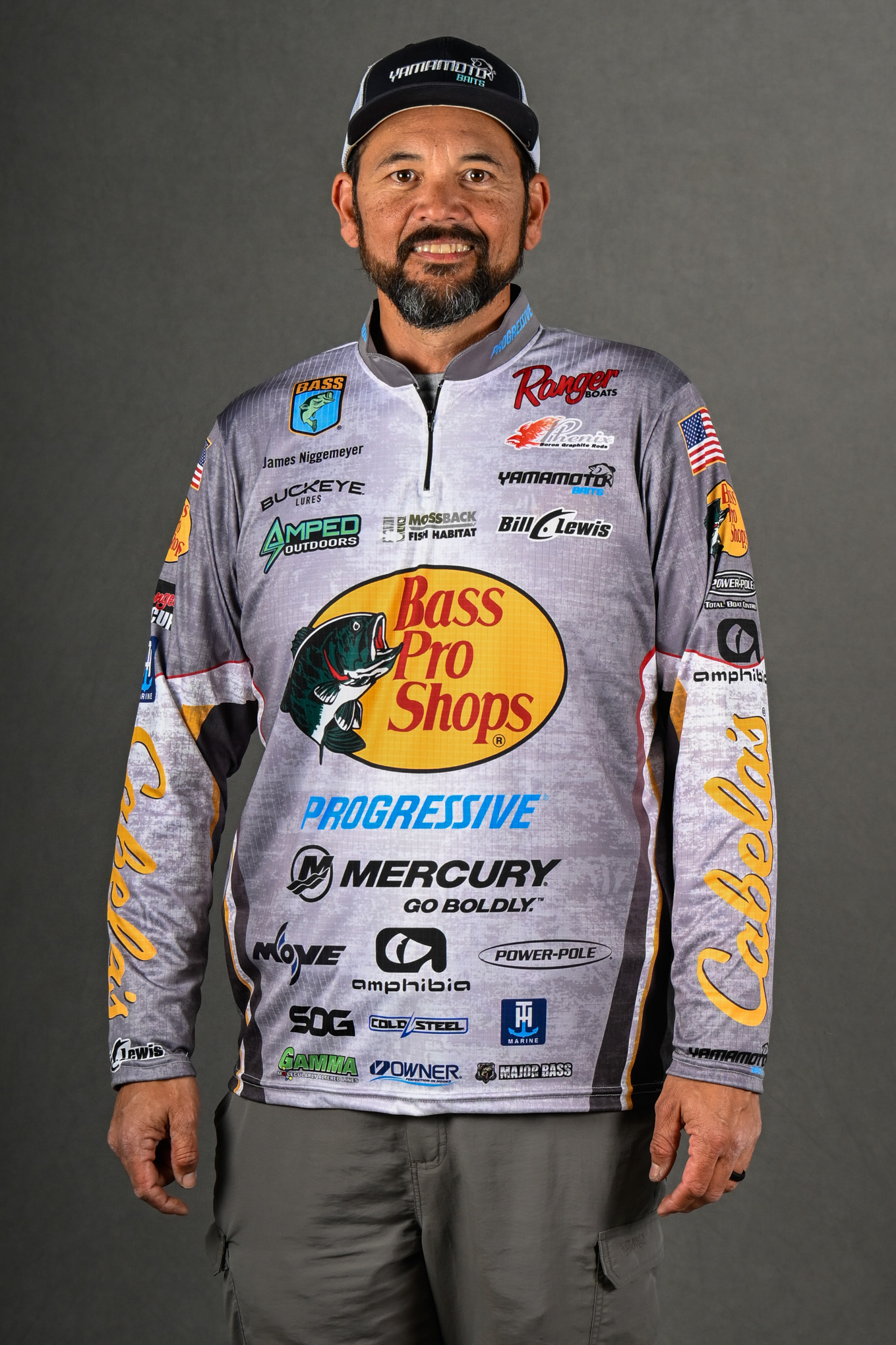
Whether you're a tournament fisherman, like me, or a weekend angler who wants to make the most of his time on the water, there are lots of ways to catch summertime bass and even more ways not to catch them. In this two-part series, I'm going to tell you about my favorite hot weather patterns that will put bass in your boat all summer long.
The first is a shallow water pattern that works anywhere you have vegetation or other heavy cover. The second is a deep-water pattern for points, channels or humps. Most of the time, they'll both work for you. Today, though, we'll focus on shallow water. Next week I'll be back and tell you how I catch them deep.
My favorite dog days pattern for shallow bass involves pitching and flipping vegetation. It's a big-stick, heavy-line approach that puts your bait in the heart of bass cover.
I use heavy gear for this pattern. Nothing less will get the job done, and it takes stout tackle to pull big fish out of the thick stuff. My favorite rod for this pattern is a St. Croix Legend Tournament Pitchin' Rod that's 7 1/2 feet long with a medium-heavy action and parabolic bend. You need a parabolic bend when fishing heavy vegetation to keep pressure on the fish at all times after you set the hook.
My reel is an Ardent F-700 flipping and pitching reel — the Denny Brauer signature reel. It's got a drag that's preset at 22 pounds, and it's made for winching bass out of thick cover. I spool it up with Sunline Super PE braid in 56-pound test.
My favorite baits for flipping and pitching to shallow summertime vegetation are the Strike King Hack Attack Jig (1/2 to 1 1/4 ounce) in black and blue or Okeechobee Craw. The weight of the jig depends on the density of the cover. If the vegetation is thick, I use a heavier jig to penetrate it. If it's sparse, I can get away with a lighter jig.
I choose my jig color based on the clarity of the water. In dark or dirty water, I like black and blue. If the water's clear, I use Okeechobee Craw. I usually match my trailer to the jig color, and my favorite trailer for this technique is the Strike King Rage Craw.
The other bait I use when flipping and pitching vegetation at this time of year is a 4-inch Strike King Rodent in black and blue or green pumpkin. This is a great bait for vegetation because it's the perfect combination of streamlined (to "punch" through the cover) and bulky (to provide lots of action).
I usually peg a 3/4- or 1-ounce sinker to the Rodent using a bobber stop. I want the bait — lure, hook and sinker — to be a single package that stays together. My hook is a 4/0 XPoint XGap. It's stout enough for even the biggest bass in heavy cover.
Of course, even the best baits won't catch bass if you don't put them in the right places, and at this time of year that means areas with vegetation that are close to deep water.
The type of vegetation you're fishing will depend on where you live. It could be milfoil, hydrilla, lily pads, hyacinths or something else. If it's green and healthy, it probably holds bass. But if it's near deep water, it almost certainly holds bigger bass.
"Deep," however, is a relative term. In Florida, deep could be 5 feet. In other places deep could mean 25 feet. It just depends on the body of water you're fishing. No matter what, though, if you find summertime vegetation near deep water, you're well on your way to finding bass.
The other key to identifying the right areas with vegetation is to find something "different." If all you have is acres and acres of seemingly identical vegetation, finding the best spot in it could be like finding a needle in a haystack.
To save yourself time and energy, focus on the things within the vegetation that are different. That might be a spot where two types of vegetation come together, where there are holes or points in the vegetation, where some stumps are mixed in, where the vegetation comes close to a boat dock, where the vegetation is especially thick or sparse or anything else that's out of the ordinary.
When you find an area that's different and has good deep-water access, you know you're in the right place.
Once you're there, it's time to start fishing. This is where you find the pattern within the pattern and start to separate the good fishermen from the really good fishermen.
Pay particular attention to how fish are taking your bait. Are all your strikes coming on the initial fall? If so, just let the bait fall to the bottom. If you don't get a bite, crank it in and make another pitch.
Are they hitting it after you move it off the bottom? Or maybe they're striking when you lift the bait up and bang it against the ceiling of the pads or other vegetation.
However the bass are reacting to your lure, pay close attention so you can duplicate the right presentation. Your goal should be to narrow things down and maximize what's effective. It'll mean more and bigger bass by the end of the day.
Go put this pattern to work on your home waters, and don't forget to come back next week for Part 2. I'll tell you about my favorite deep-water pattern for summer bass.





